Weekly Recap
US stocks rallied across the holiday-shortened week with the S&P 500 and the Nasdaq reaching record highs for a second straight week. Meanwhile, the USD kicked off the second quarter on the back foot, down 0.4% across the week.
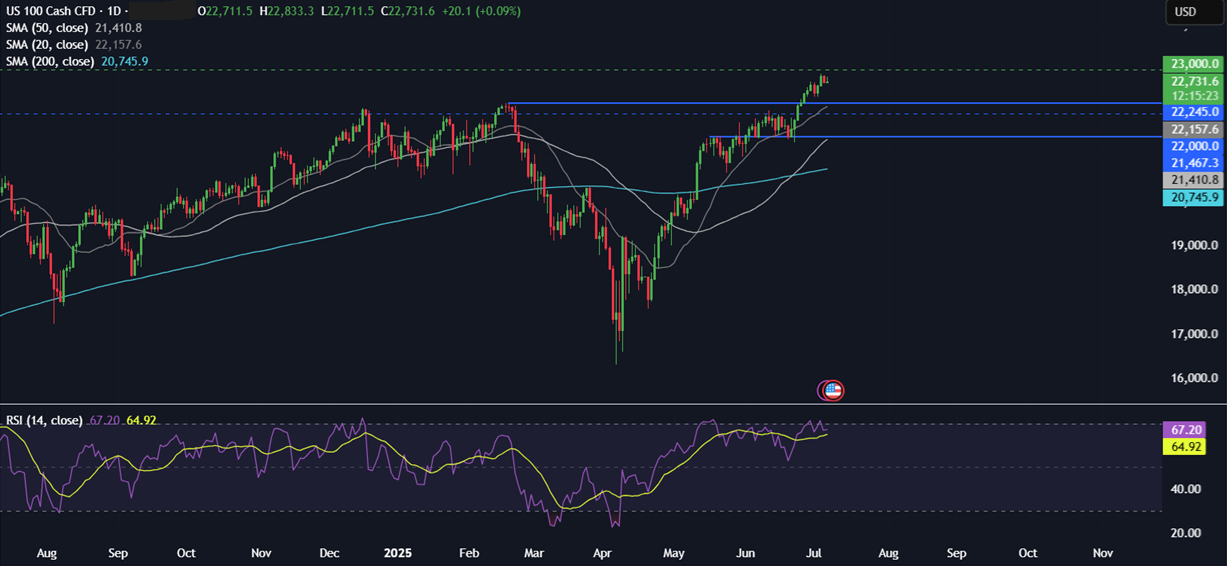
Much of the focus during the week centred around the progress of Trump’s One Big Beautiful Bill, which narrowly passed the Senate on Tuesday and the House of Representatives on Thursday afternoon. The fiscal package of tax cuts and spending is set to add $3.4 trillion to the U.S. debt pile over 10 years.
Trade-related headlines also continued to flow across the week, with President Trump announcing a trade deal with Vietnam on Wednesday and making comments around negotiations with several other trade partners ahead of the upcoming tariff deadline this week. Safe haven gold jumped 1.9% last week.
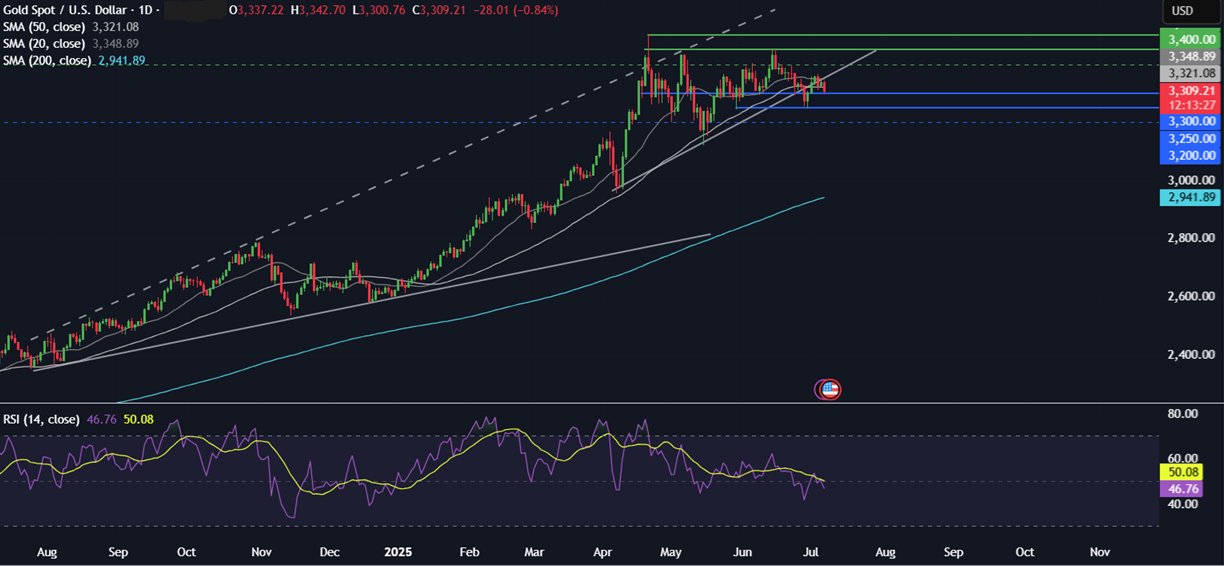
On the data front, the US economy added 147,000 jobs in June, ahead of estimates and up from May’s revised output of 144,000. The unemployment rate ticked lower to 4.1% while average hourly earnings grew 0.2% month over month. The report was a welcome surprise after Wednesday’s much weaker-than-expected private payrolls, which showed a contraction of 33,000 in June.
In Europe, indices traded roughly flat over the week and headline inflation in the region ticked up to the ECB’s 2% target in June after hitting an 8-month low of 1.9% in May. ECB president Christine Lagarde reacted to the data at the central bank’s annual forum in central Portugal, cooling expectations for further interest rate cuts this year
OPEC+ (Saturday)
Oil prices are falling at the start of the week after OPEC+ surprised the market by hiking output by more than expected in August. In the meeting on Saturday, OPEC+ agreed to increase production by 548K barrels a day in August. This was more than the 411K barrels per day that the group had approved for May, June, and July. The decision will bring almost 80% of the 2.2 million barrels per day voluntary cuts from OPEC producers back into the market. Goldman Sachs predicts that OPEC+ will announce a 550K barrels per day increase for September at the next meeting on August 3.
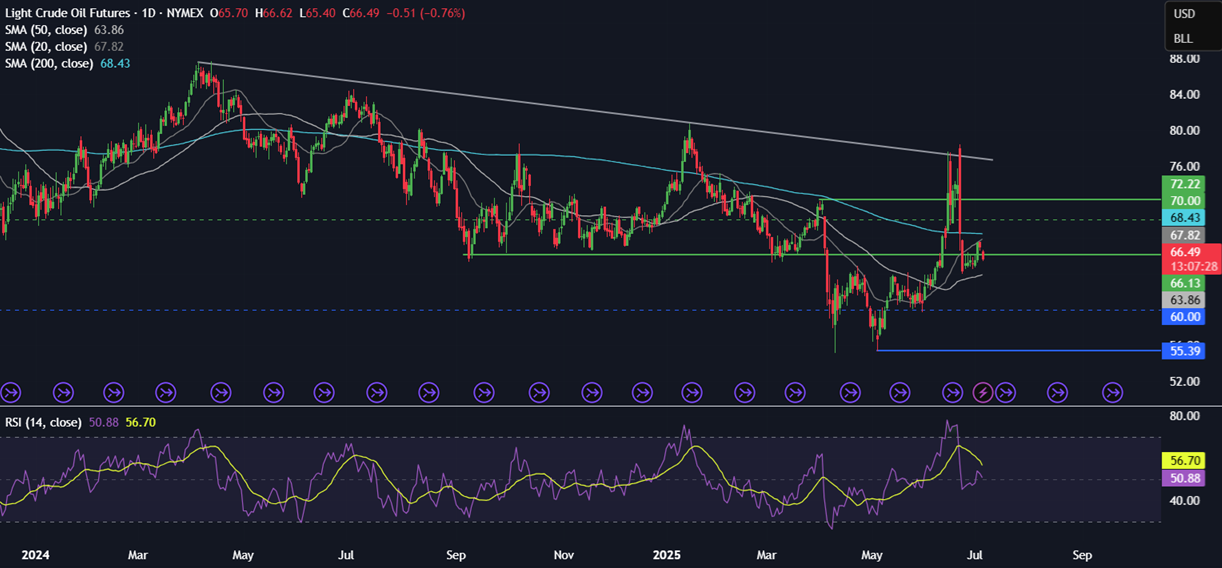
RBA rate decision (Tuesday)
The RBA is expected to cut interest rates for a third time on Tuesday amid signs that the economy is slowing. The central bank is expected to cut rates by 25 basis points to 3.6% after the previous meeting was notably more dovish in its outlook. The post-COVID inflation surge is now pretty much entirely out of the economy. The RBA’s job is now to support growth. The RBA is expected to cut rates again, potentially twice more, before the end of the year. The economy is expected to grow by 1.6% this year, down from 2% in the previous year. Official data showed the economy grew just 0.2% in Q1 amid signs that consumption is softer than anticipated. The lack of a trade deal ahead of the July 9 deadline also adds downside risk to the economy and the RBA’s interest rates. Inflation cooled to 2.1% in May, down from 2.5% at the start of the year. A dovish-sounding RBA could drag on AUD/USD, although the longer-term uptrend looks solid.
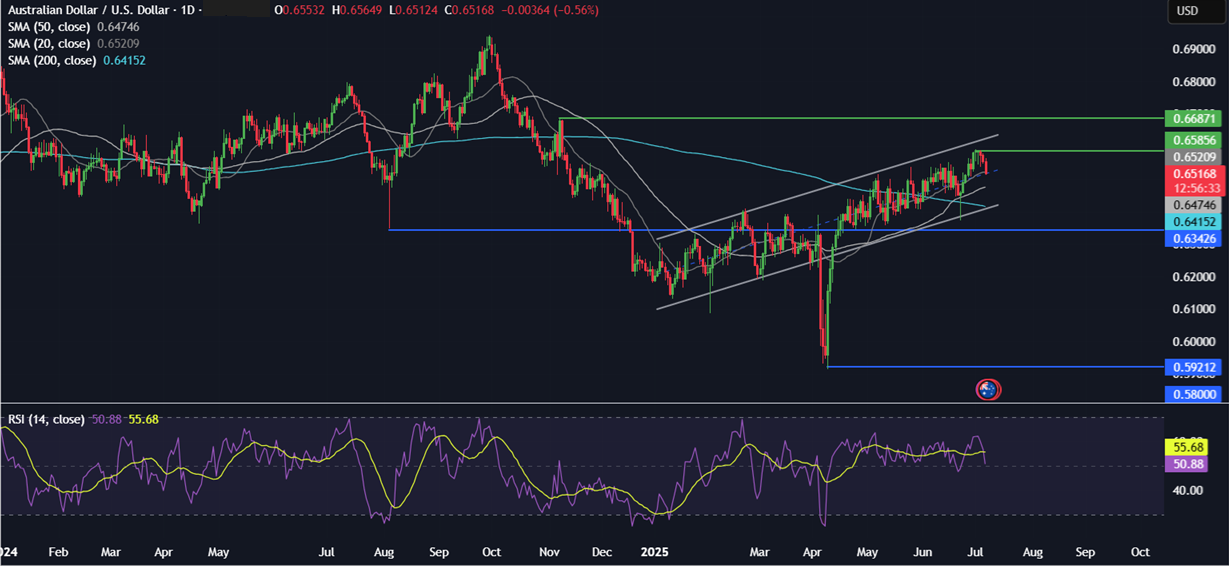
EU-US tariff negotiation deadline (Tuesday)
President Trump set a July 8th deadline for a provisional EU-U.S. trade agreement or face 50% reciprocal tariffs. Talks, led by EU Trade Commissioner Sefcovic, focus on securing a 10% baseline tariff in exchange for immediate relief for US exports, including cars, steel, and semiconductors. The EU is aiming for a UK-style carve-out, offering upfront exemptions, which is necessary to secure the backing of member states. The Commission is also seeking sector-specific reductions, particularly in the pharmaceutical and aerospace sectors. Given the tight deadline, details are likely to follow after July 8th. The worst-case scenario would involve a 50% tariff and new taxes on pharmaceuticals and semiconductors. In contrast, a more positive outcome would be the continuation of talks across the summer months, with current tariffs in place. The reality could fall anywhere between these scenarios. The EUR has benefited from US trade tariff jitters and the ‘sell America’ trade. EUR/USD trades close to a 4-year high.
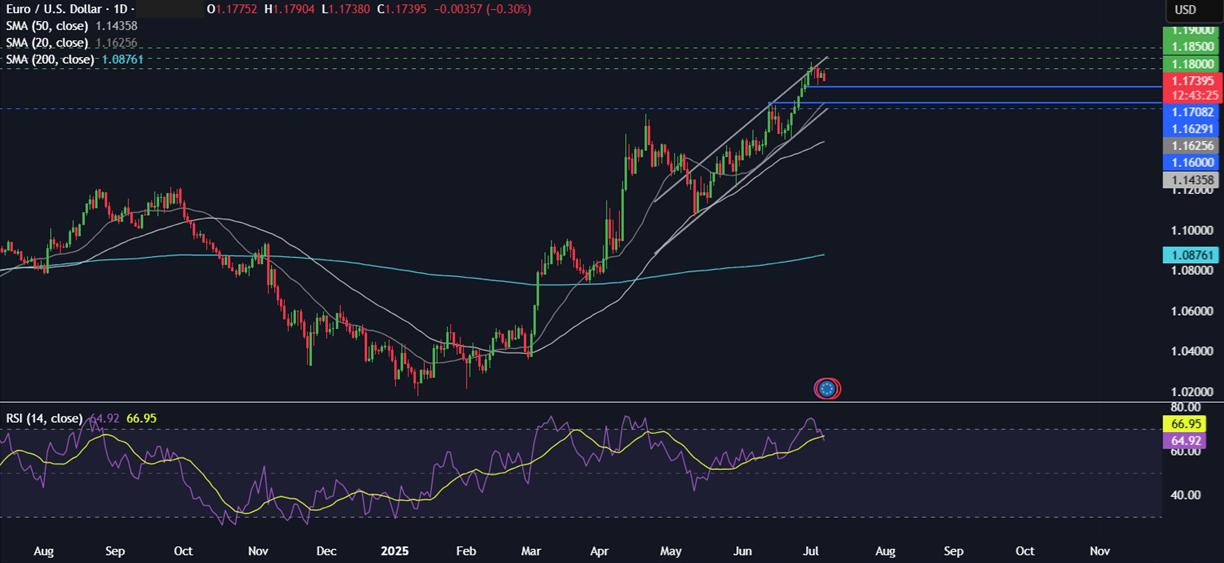
China CPI (Wednesday)
The Chinese CPI is expected to rise slightly to 0% YoY in June, up from -0.1% in May, marking the fourth consecutive month in which stimulus measures from Beijing have proved insufficient to boost domestic consumption. Deflation at the factory gates level worsened with PPI falling 3.3% YoY in May, the steepest decline since July 2023 and the 33rd consecutive month of deflation. The data reflects excess capacity and intense price competition, particularly in the auto industry. A weak PPI is considered a leading indicator for CPI, so we could see deflationary pressures persisting. Weak inflation could fuel stimulus bets and boost the Hang Seng.
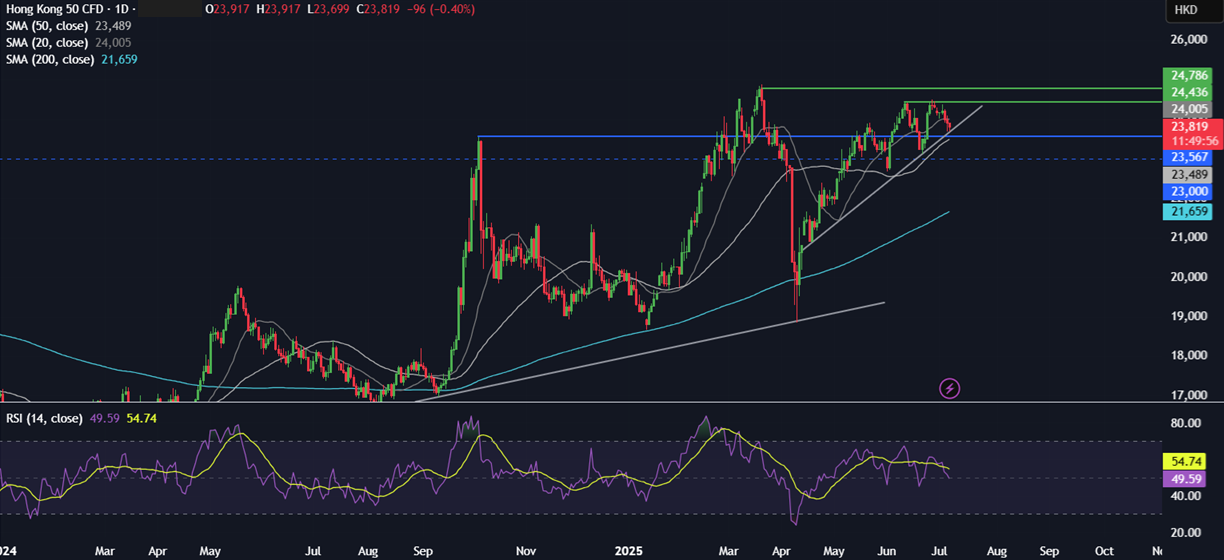
Trade tariff deadline (Wednesday)
July 9th is the key date that the market is focusing on, as it marks the deadline for the 90-day pause in reciprocal trade tariffs, with no extension currently signaled. Trump has said that his administration would probably start notifying trading partners on Friday of the new U.S. trade tariffs, which will be effective from August 1st. Tariffs are expected to range in value from 10% to 20% or 60% to 70% according to Trump. Meanwhile, Treasury Secretary Bessent said to expect a flurry of trade deals in the coming days with about 100 countries that will receive a minimum 10% reciprocal tariff. To date, there has been limited progress in concluding negotiations with major trading partners, such as the EU and Japan. The trade tariff announcements come as U.S. stocks trade around record highs, whilst the sell America trade has been more evident in the US dollar, which trades at 3.5-year lows. This US weakness has been a boon for equities. Markets appear to be positioned for a relatively benign outcome, which suggests some risk and near-term volatility if that fails to materialize. The S&P 500 trades at a record high, boosted in part by the weaker USD. However, aggressive tariffs could inject volatility.
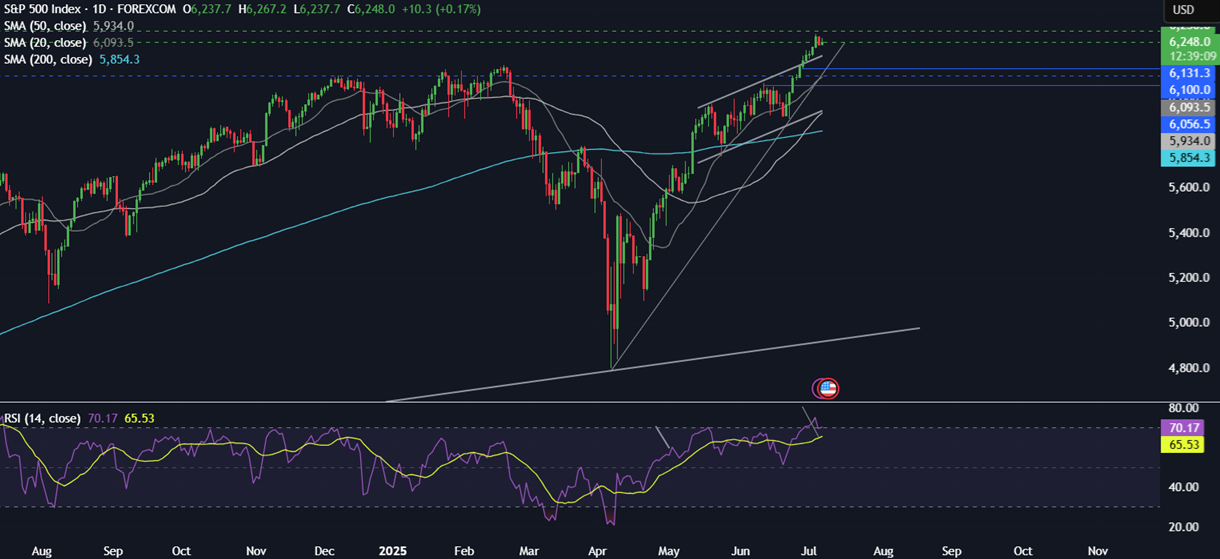
FOMC minutes (Wednesday)
The minutes of the FOMC meeting (June 17-18) may be considered slightly stale, given that we’ve heard from Federal Reserve Chair Jerome Powell on several occasions since the meeting. The FOMC left interest rates unchanged at 4.25% to 4.5% and the dot plot indicated 50 basis points worth of cuts in 2025. The Fed downwardly revised its GDP forecast to 1.4% for 2025. Unemployment forecasts rose, and the core PCE inflation forecast also increased to 3% at the end of 2025. Federal Reserve Chair Jerome Powell warned about the potential inflationary impact of President Trump’s tariffs, lending support to the Fed’s wait-and-see stance. Powell also emphasised that the forecasts were uncertain and he expects to learn more over the summer before better decisions can be made in a couple of months. However, since then, Jerome Powell has softened his tone very slightly, saying that if inflationary pressures don’t materialize, then the Fed could continue to cut rates. That said, in light of the solid NFP report, hawkish comments could help drive the USD and USD/JPY higher.
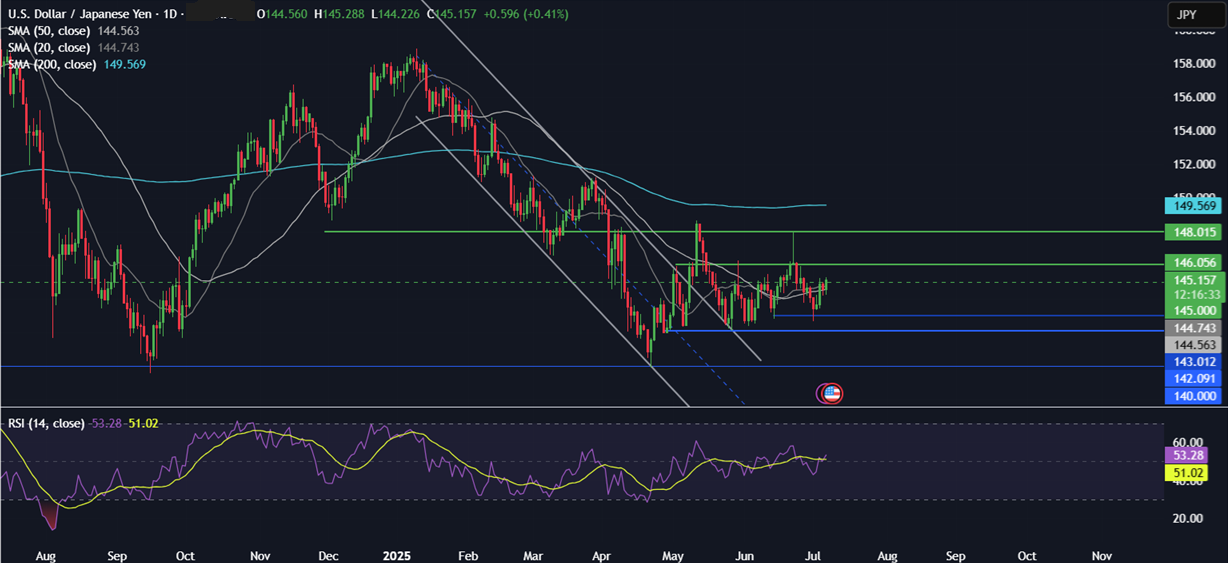
Canadian jobs report (Friday)
The Bank of Canada is currently on pause and avoiding forward guidance, adhering to its meeting-by-meeting stance due to economic uncertainty. The upcoming Canadian jobs report could further shape expectations for a BoC rate cut. The markets are currently pricing in one further rate cut by the end of 2025; however, a weak jobs report could prompt the markets to start pricing in two rate cuts with greater certainty. In its latest meeting, the BoC highlighted that the labour market had softened with unemployment rising to 6.9% as it braces for a weaker Q2. What happens next will depend on the Canada-U.S. trade relationship and how much Canada can grow its trade with other overseas countries. Export-oriented businesses may quickly scale back hiring plans in response to US tariffs. Weak jobs data could weigh on the CAD and boost USD/CAD.
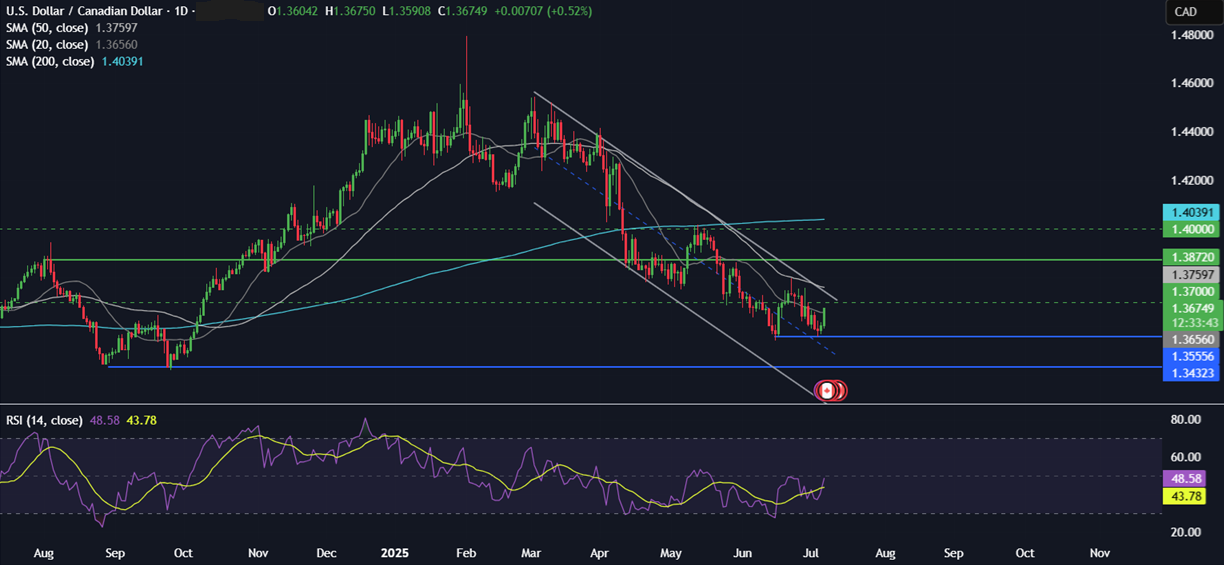
Trading involves risk.
The content provided here is for informational purposes only. It is not intended as personal investment advice and does not constitute a solicitation or invitation to engage in any financial transactions, investments, or related activities. Past performance is not a reliable indicator of future results.
The financial products offered by the Company are complex and come with a high risk of losing money rapidly due to leverage. These products may not be suitable for all investors. Before engaging, you should consider whether you understand how these leveraged products work and whether you can afford the high risk of losing your money.
The Company does not accept clients from the Restricted Jurisdictions as indicated in our website/ T&C. Some services or products may not be available in your jurisdiction.
The applicable legal entity and its respective products and services depend on the client’s country of residence and the entity with which the client has established a contractual relationship during registration.




